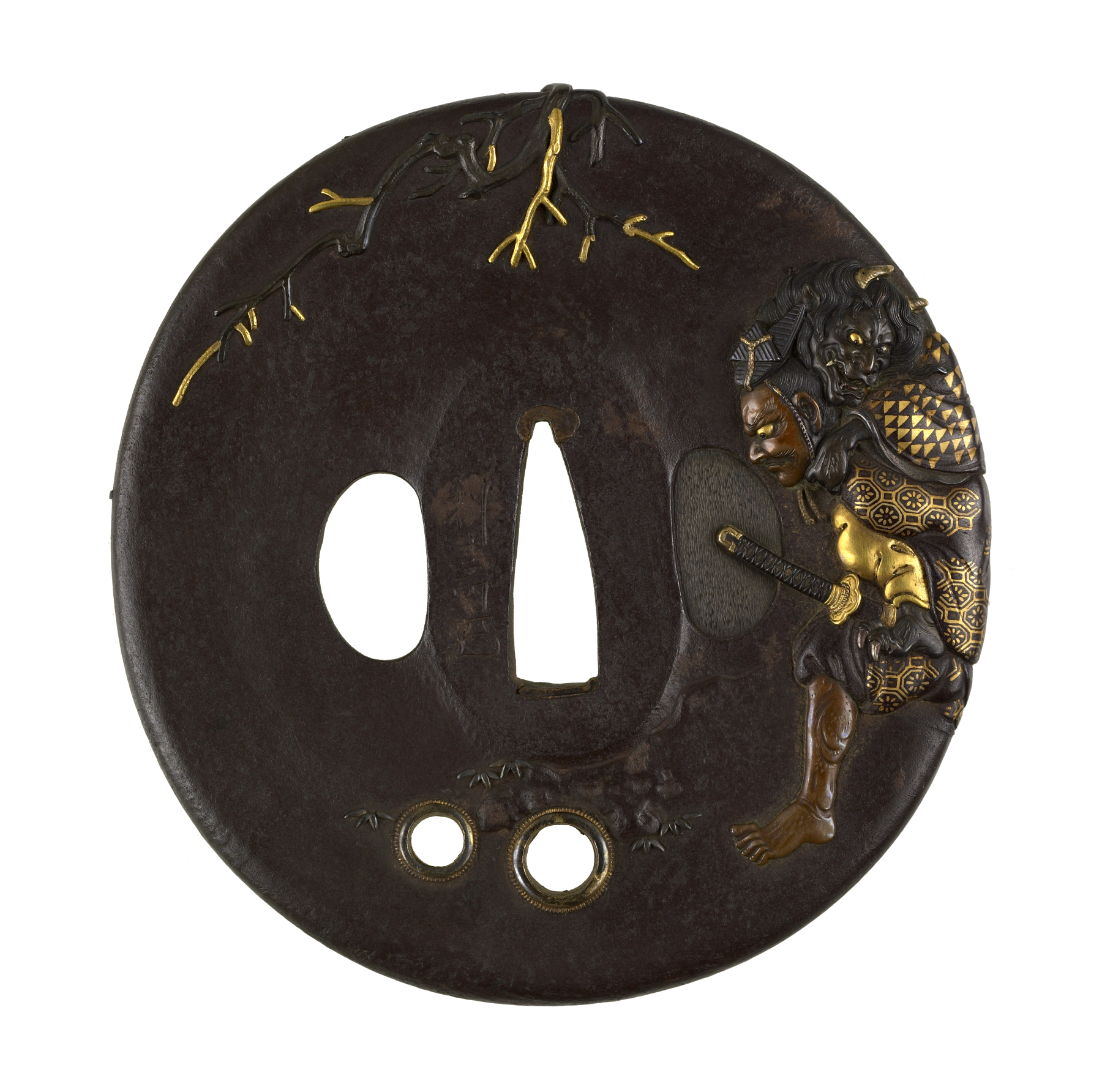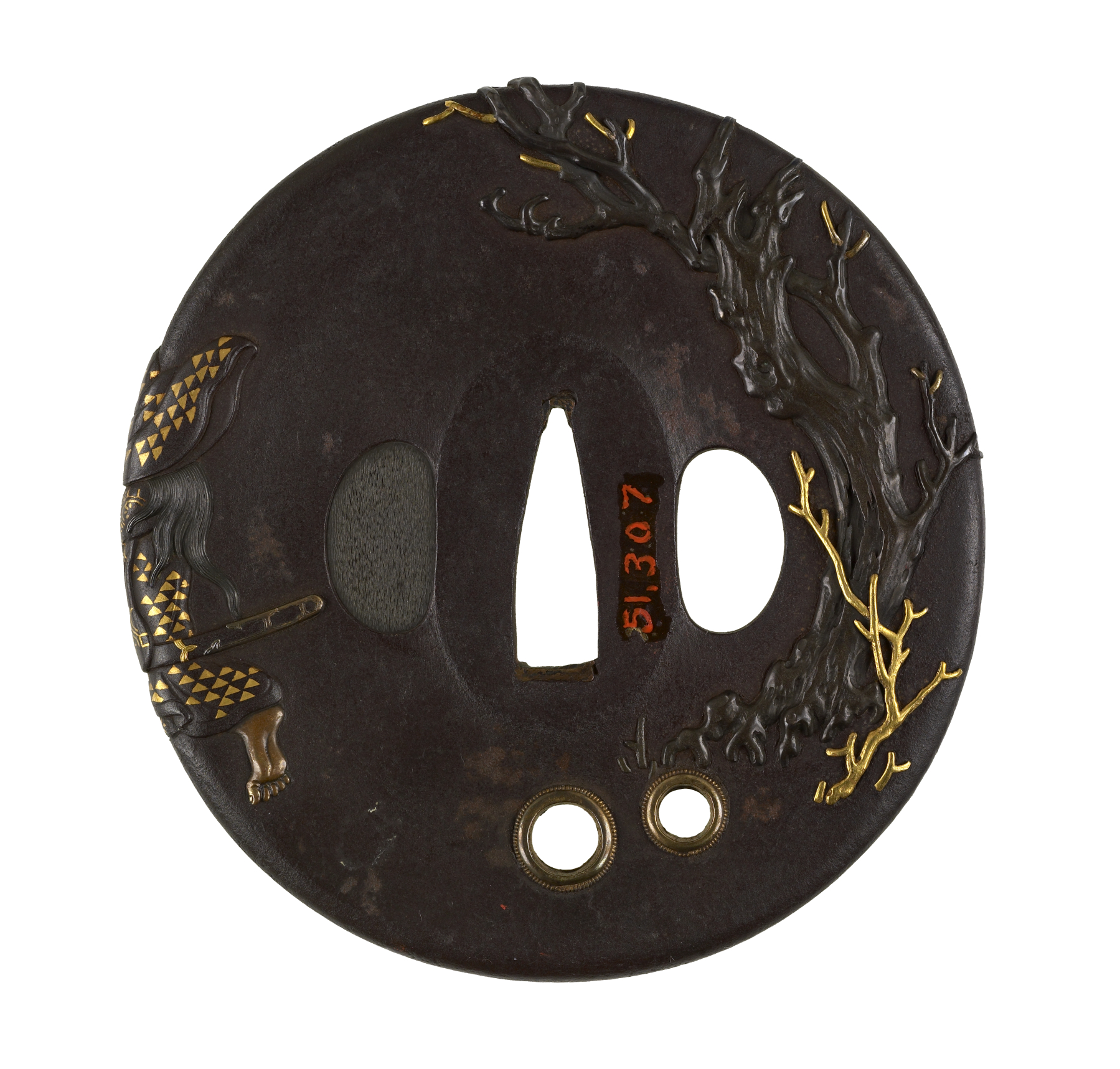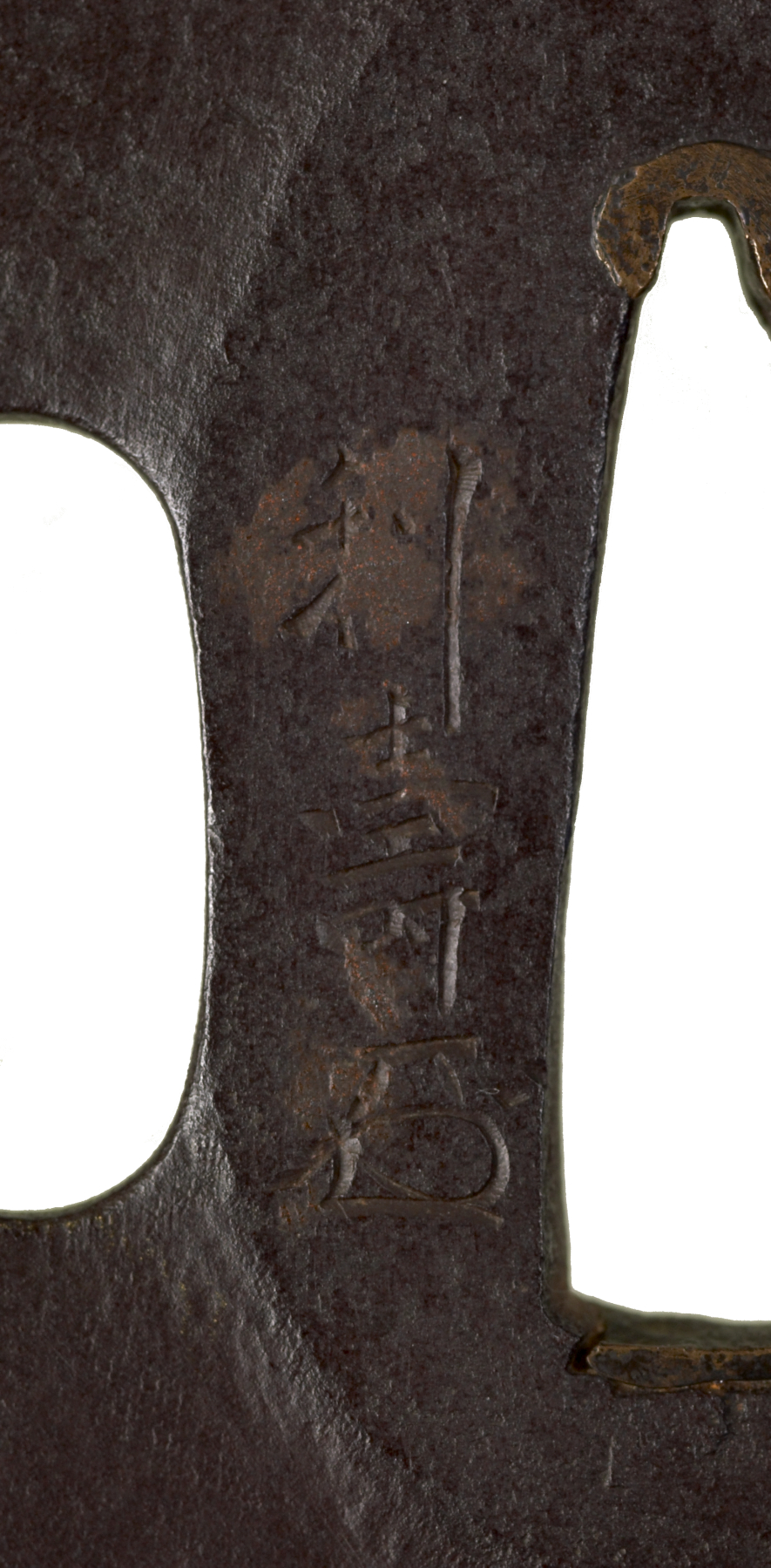Tsuba with Ômori Hikohichi Crossing a Stream with a Demon
(Japanese Military Armor)
The main figure on this tsuba is Ômori Hikohichi, a 14th-century warrior. He is most often depicted in art as he is here, with a female demon on his back. Hikohiki is said to have offered to carry a beautiful woman across a stream. While crossing the stream, he saw her reflection as a demon in the water. In some versions of the story he kills her, while in others she runs away. When the story was adapted for use in theatrical dramas, the woman was portrayed as the daughter of Kusunoki no Masahige, who erroneously thought Hikohichi was responsible for her father's death. The daughter was not actually a demon, but wore a mask to frighten Hikohichi. On the tsuba, Hikohichi and the female demon are shown on the right side. Their bodies wrap around the edge and can be seen on the back. The two holes on the bottom of the tsuba were used for cords attached to the sword handle.
Inscription
Provenance
Provenance (from the French provenir, 'to come from/forth') is the chronology of the ownership, custody, or location of a historical object. Learn more about provenance at the Walters.
Henry Walters, Baltimore [date and mode of acquisition unknown]; Walters Art Museum, 1931, by bequest.
Geographies
Japan, Tokyo (Edo) (Place of Origin)
Measurements
3 9/16 x 3 1/2 x 3/16 in. (9.1 x 8.82 x 0.55 cm)
Credit Line
Acquired by Henry Walters
Location in Museum
Not on view
Accession Number
In libraries, galleries, museums, and archives, an accession number is a unique identifier assigned to each object in the collection.
In libraries, galleries, museums, and archives, an accession number is a unique identifier assigned to each object in the collection.
51.307






